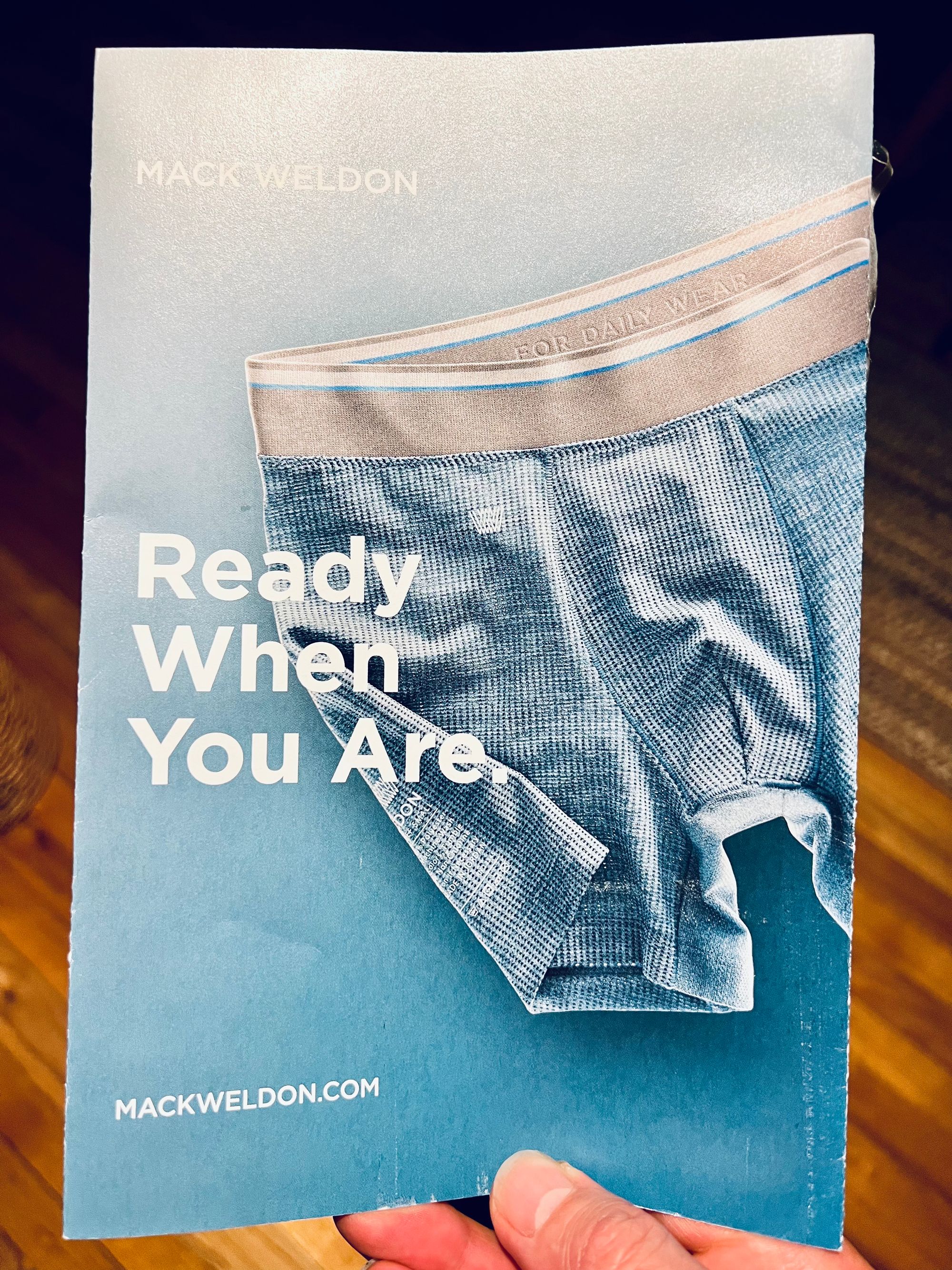Connecting marketing initiatives between the physical and virtual worlds
I am often surprised that so many brands send out direct mailers with no easy link between the physical and virtual experience—and no clear call-to-action or incentive to make a purchase.
I received a nice little catalog in the mail today from Mack Weldon—who I’m a big fan of. I have a number of their products and I love what they do.

Having started Lucid designing more for print and packaging than web, I still love physical, printed media—even if it’s not particularly nimble, ecological, or sustainable.
What surprises me, though, is that so many brands send out direct mailers with no easy link between the physical and virtual experience—and no clear call-to-action or incentive to make a purchase.
I worked with a brand a few years ago who sent over a million printed catalogs without informing their web design agency (us) that there was likely to be a spike in direct traffic—or to give us an opportunity to develop ways to tie the physical catalog to the collections and products on their site.
There are so many ways this could be done—from short URLs with short-codes that redirect to the full URLs (allowing the destination to be changed later post-production, if needed) to QR codes, or simply linking to the website with a shortcut to the collection or product (again, best done using redirects because it allows it to be changed and because Shopify’s URLs tend to be long).
Anyway, back to this nice little booklet from Mack Weldon.
While there is a QR code to sign up for SMS updates on the back, there are no QR codes or URLs or short codes linking to products or collections. The only link to the website is the full domain name—with no call-to-action.
I’m not a huge proponent of discounting as a strategy (obviously it has a place and of course it works, sometimes—more on that another day) but, if you’re going to go to the expense of sending out a (presumably) large number of direct mailers, there are a number of reasons why it makes sense to include promo codes.
A discount will incentivize action but, more than that, a promo code provides valuable insight into customer behavior. Rather than simply seeing a bump in sales from direct traffic with zero data on where that traffic came from, a promo code enables a brand to tie traffic and a purchase to the mailer it came from, which helps validate the ROI on the campaign, amongst other things.
With on-demand printing being easy and affordable, you could personalize the mailer with the recipient’s name and the QR codes could potentially take them to a personalized experience, tailored to them (something that is also surprisingly rarely done but is easy to implement—which is another topic for another day).
All that to say, this is a missed opportunity to build a connection between the physical object in a prospective buyer’s hand with the brand—at no extra cost.
Mack Weldon is not alone. I am baffled by how few brands even attempt to guide recipients from their printed mailers to their websites. It really is very simple to do but I suspect the reason it’s not more commonly done is more about a disconnect between design and marketing teams than anything else—something we see often and something I am working to improve with the brands I work with.
Keen to explore how to get more out of your direct mail campaigns? I’d love to connect.